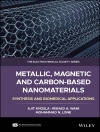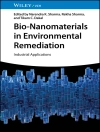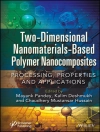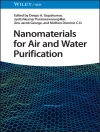Nanotechnology-Enhanced Food Packaging
Timely overview of functional food packaging made with nanotechnology and nanomaterials
In Nanotechnology-Enhanced Food Packaging, a distinguished group of researchers delivers a comprehensive and insightful introduction to the application of nanomaterials in food packaging. This edited volume covers recent innovations—as well as future perspectives—in the industry and offers a complete overview of different types of nanomaterials used in food packaging.
The book also discusses the use of nanoparticles in the development of active and functional food packaging and the related environmental and toxicological aspects. Featuring one-of-a-kind contributions from leaders in the field, Nanotechnology-Enhanced Food Packaging provides real-world solutions to food packaging challenges and considers the legislative and economic implications of new technologies.
Among the new developments in nanotechnology-enhanced food packaging covered by the book are:
- Thorough introduction to biopolymers in food packaging systems and nanostructures based on starch, their preparation, processing, and applications in packaging
- Comprehensive explorations of chitosan-based nanoparticles and their applications in the food industry
- Practical discussions of active packaging systems based on metal oxide nanoparticles and an overview of higher barrier packaging using nano-additives
- In-depth examinations of the characterization techniques for nanostructures in food packaging
Perfect for materials scientists, food technologists, and polymer chemists, Nanotechnology-Enhanced Food Packaging also belongs on the bookshelves of plastics technologists and allied professionals in the food industry.
表中的内容
Preface xv
1 Introduction to Nanotechnology-Enhanced Food Packaging Industry 1
Kunal Singha, Baburaj Regubalan, Pintu Pandit, Subhankar Maity, andShakeel Ahmed
1.1 Introduction 1
1.2 Nanotechnology Applications in Food Processing 3
1.2.1 Nanotechnology Applications in Preserving Meat Density, Taste, and Presentation 3
1.2.2 Nanotechnology Applications for Maintaining the Food Nutrient Value 4
1.3 Nanotechnology Functions for Preserving or Shelf Life 4
1.4 Nanotechnology in Food Packaging 4
1.4.1 Usages of Nanosensors in Pathogen and Adulterant Detection in the Food Industry 6
1.4.2 Nanotechnology Applications in Food Safety Issues 7
1.4.3 Bio-Based Nano-packaging in Food Industry 8
1.5 Nanocoating Applications in Food Industry 8
1.6 Nanocoats Used in Food Manufacturing 9
1.7 Importance of Nanolamine in Food Business 10
1.8 Antimicrobial Films Used in Food Industry 10
1.9 Nano-scavenging Oxygen Film Used in Food or Eating Substances 11
1.10 UV-Proof Processing of Foods Using Nanometal Oxides 11
1.11 Nano-intelligent Food Labeling 12
1.12 Nanotechnology-Aided Freshness and Spoilage Indicators 12
1.13 Nanotechnology-Aided Oxygen Indicators in Food Industry 13
1.14 Application of Nanotechnology in Product Identification and Anti-counterfeiting 13
1.15 Usages of Nanotechnology in Traceability and Active Tags in Food and Drug Industry 13
1.16 Conclusions 14
References 14
2 An Overview of Biopolymers in Food Packaging Systems 19
Jéssica de Matos Fonseca, Betina L. Koop, Thalles C. Trevisol, Cristiane Capello, Alcilene R. Monteiro, and Germán A. Valencia
2.1 Introduction 19
2.2 Main Polymers Isolated from Biomass 20
2.2.1 Casein and Whey 20
2.2.2 Cellulose and Derivatives 22
2.2.3 Chitin and Chitosan 23
2.2.4 Collagen and Gelatin 23
2.2.5 Soybean and Derivatives 29
2.2.5.1 Soy Protein 29
2.2.5.2 Soybean Soluble Polysaccharide 32
2.2.5.3 Soybean Fiber and Derivatives 32
2.2.6 Starch and Derivatives 35
2.3 Main Polymers Obtained by Microbial Production 35
2.4 Main Biodegradable Polymers Chemically Synthesized 40
2.5 Conclusions 41
Conflicts of Interest 42
Acknowledgments 42
References 42
3 Nanostructures Based on Starch, Their Preparation, Processing, and Application in Packaging 55
Cristian C. Villa
3.1 Introduction 55
3.1.1 Starch Nanoparticles and Nanocrystals 55
3.1.2 Starch Nanomaterials in Food Packaging 57
3.1.3 Starch Nanomaterials as Carriers of Bioactive Molecules 58
3.1.4 Perspectives and Outlook 59
References 60
4 Cellulose Nanostructures and Its Application as Effective Food Packaging Systems 67
Girilal M and Jyothi K. Nair
4.1 Introduction 67
4.2 Source of Cellulose 68
4.3 Cellulose Structure 68
4.4 Properties of Cellulose 70
4.5 Nanocellulose 70
4.5.1 Types of Nanocellulose 71
4.5.1.1 Cellulose Nanofibrils 71
4.5.1.2 Cellulose Nanofibers 72
4.5.1.3 Cellulose Nanowhiskers 72
4.5.1.4 Cellulose Nanoballs 72
4.5.1.5 Cellulose Nanocrystals 72
4.5.2 Properties of Nanocellulose 72
4.5.2.1 Mechanical Properties 73
4.5.2.2 Barrier Properties 73
4.5.2.3 Water Vapor Properties 73
4.5.2.4 Other Properties 73
4.5.3 Synthesis of Nanocellulose 74
4.5.3.1 Electrospinning 74
4.5.3.2 Extrusion 76
4.5.3.3 Casting 76
4.5.3.4 Paper Making Process Using Filtration 76
4.5.3.5 Coating Process 77
4.6 Nanocellulose as Packaging Material 77
4.7 Comparison of Nanocellulose and Cellulose 81
4.8 Disadvantages of Using Nanocellulose in Food Packaging 82
4.9 Conclusions 84
References 84
5 Chitosan-Based Nanoparticles and Their Applications in Food Industry 87
Basant E. Elsaied and Ahmed A. Tayel
5.1 Introduction 87
5.2 Chitosan 88
5.2.1 Chitosan Precursor: Chitin Origins 88
5.2.1.1 Terrestrial Sources 88
5.2.1.2 Aquatic Sources 89
5.2.1.3 Microbiological Sources 89
5.2.2 Chemical Composition and Properties 90
5.2.2.1 Structural Properties 90
5.2.2.2 Physicochemical Properties 91
5.2.2.3 Diverse Properties 92
5.2.3 Preparation Methods and Manufacturing 92
5.2.4 Chitosan Modifications 93
5.2.5 Overview of Chitosan Applications 94
5.2.5.1 Food and Beverage Industry 94
5.2.5.2 Aquaculture 94
5.2.5.3 Pharmacy and Cosmetics 97
5.2.5.4 Dentistry 97
5.3 Nanoforms of Chitosan 97
5.3.1 Chitosan Nanocomposites 97
5.3.2 Chitosan Nanocarriers 97
5.3.3 Preparation Methods 98
5.3.3.1 Ionic Gelation Method 98
5.3.3.2 Reverse Micellar Method 98
5.3.3.3 Emulsion-Based Solvent Evaporation Method 98
5.3.3.4 Coprecipitation Method 98
5.3.4 Characterization Techniques 98
5.3.4.1 UV–Visible Spectroscopy (Spectroscopic Analysis) 98
5.3.4.2 Electron Microscopy (EM) 99
5.3.4.3 Dynamic Light Scattering (DLS) 99
5.3.4.4 Zeta Potential (ZP) 100
5.3.5 Overview of Applications 100
5.3.5.1 Tissue Engineering 100
5.3.5.2 Water Treatment 100
5.3.5.3 Agriculture 100
5.3.5.4 Drug Delivery 100
5.4 Chitosan-Based Nanoforms Applications in Food Industry 101
5.4.1 Opportunities in Food Processing 101
5.4.1.1 Chitosan-Based Nanoparticles: Enhancing Food Taste and Appearance 102
5.4.1.2 Chitosan-Based Nanoparticles: Maintaining Nutritional Value 103
5.4.2 Opportunities in Food Packaging 108
5.4.2.1 Chitosan Nanoforms Functionality as Food Packaging Materials 108
5.4.2.2 Chitosan-Based Nanoparticles Toxicity and Fate in Human Body 114
5.5 Updated Regulations in Application of Chitosan-Based Nanoparticles in Food 116
References 117
6 Nutrients-Based Nanocarriers and Its Application in Packaging Systems 129
Leidy T. Sanchez, N. David Rodriguez-Marin, Magda I. Pinzon, and Cristian C. Villa
6.1 Lipid-Based Nanocarrier 129
6.1.1 Nanoemulsions 130
6.1.2 Nanoliposomes 130
6.1.3 Solid Lipid Nanoparticles (SLNps) 132
6.1.4 Nanostructured Lipid Carriers (NLCs) 132
6.2 Carbohydrate-Based Nanocarriers 132
6.2.1 Starch Nanoparticles (SNPs) and Nanocrystals (SNCs) 133
6.2.2 Chitosan Nanoparticles 133
6.2.3 Alginate Nanoparticles 133
6.3 Protein-Based Nanocarriers 134
6.4 Applications of Nanocarriers in Active and Bioactive Food Packaging 134
6.5 Outlooks and Perspectives 135
References 136
7 Active Packaging Systems Based on Metal and Metal Oxide Nanoparticles 143
Lina F. Ballesteros, Hafsae Lamsaf, Sebastian Calderon V, Miguel A. Cerqueira, Lorenzo Pastrana, and José A. Teixeira
List of Abbreviations 143
7.1 Introduction 144
7.2 Metal and Metal Oxide Nanoparticles Used in Active Food Packaging 145
7.3 Methods of Production of Metal and Metal Oxide Nanoparticles 147
7.3.1 Physical Synthesis 147
7.3.2 Chemical Synthesis 148
7.3.3 Biological Synthesis 149
7.4 Incorporation of Metal and Metal Oxide Nanoparticles into Food Packaging Materials 149
7.4.1 Extrusion 150
7.4.2 Casting 150
7.4.3 Physical Vapor Deposition 151
7.4.4 Electrospinning 151
7.5 Effect of Metal and Metal Oxide Nanoparticles on Active Packaging Properties 152
7.5.1 Structure 152
7.5.2 Morphology 153
7.5.3 Mechanical Properties 155
7.5.4 Barrier Properties 156
7.5.5 Antimicrobial Activity 157
7.5.5.1 Silver Nanoparticles 157
7.5.5.2 Zinc Oxide Nanoparticles 159
7.5.5.3 Copper and Copper Oxide Nanoparticles 160
7.5.5.4 Titanium Dioxide Nanoparticles 160
7.5.5.5 Gold Nanoparticles 161
7.5.5.6 Other Nanoparticle Systems 161
7.5.6 Scavenger Properties 161
7.5.7 Photocatalytic Properties 162
7.5.8 Optical Properties 163
7.6 Migration of Nanoparticles 163
7.6.1 Food Safety and Regulations 164
7.6.2 Regulation 165
7.7 Environmental Impact of Active Food Packaging Materials 166
7.7.1 Biodegradability 166
7.7.2 Recyclability 167
7.7.3 Life Cycle Assessment 167
7.8 Conclusions and Future Trends 168
Acknowledgments 168
References 169
8 Fabrication of Intelligent Packaging Systems Using Nano-Indicators and Sensors 183
Xiuting Hu and Ming Miao
8.1 Introduction of Intelligent Packaging 183
8.2 Nanoparticle-Based Temperature Indicators 185
8.2.1 Silver Nanoparticle-Based TTI 185
8.2.2 Gold Nanoparticle-Based TTIs 187
8.2.3 Polydiacetylene/Silica Nanocomposite-Based TTI 188
8.2.4 Nanofiber-Based TTIs 189
8.3 Nanomaterial-Based Humidity Sensors 190
8.3.1 Zn O Nanoparticle-Based Humidity Sensors 190
8.3.2 Other Metallic Nanoparticle-Based Humidity Sensors 191
8.3.3 Polymeric Nanocomposite-Based Humidity Sensors 192
8.4 Nanomaterial-Based p H Indicators and Sensors 193
8.5 Nanoparticle-Based O2 Indicators 195
8.6 Nanomaterial-Based CO2 Sensors 197
8.7 Nanomaterial-Based Freshness Sensors 198
8.7.1 Freshness Sensors Based on Detection of Biogenic Amines 199
8.7.2 Freshness Sensors Based on Detection of Biogenic Sulfides 201
8.7.3 Freshness Sensors Based on Detection of ATP Degradation Products 202
8.8 Conclusions and Perspectives 205
References 206
9 Nanostructure-Based Edible Coatings as a Function of Food Preservation 213
Anna Rafaela C. Braga, Josemar G. Oliveira Filho, Ailton C. Lemes, and Mariana B. Egea
9.1 Nanotechnology in Food Packaging: Principles and Applications 213
9.2 Edible Coatings 215
9.2.1 Chemical Characteristics of Edible Coatings 215
9.2.2 Methods to Apply Edible Coatings 216
9.2.3 Materials Used in the Edible Coatings 217
9.2.4 Incorporation of Nanomaterials in Edible Coatings 218
9.3 Safety of Nanocomposite for Application of Edible Coatings 223
9.4 Nanotechnology Regulation 225
9.5 Final Considerations and Outlook 227
References 227
10 An Overview of Higher Barrier Packaging Using Nanoadditives 235
Johnsy George, Basheer Aaliya, Kappat V. Sunooj, and Ranganathan Kumar
10.1 Introduction 235
10.2 Gas and Moisture Permeability through Polymer Packaging Materials 236
10.2.1 Permeability of Oxygen and Carbon Dioxide 237
10.2.2 Permeability of Moisture 238
10.3 Nanoadditives for Improving Barrier Properties 238
10.4 Methods to Prepare High Barrier Packaging Materials 239
10.4.1 Polymer Nanocomposites 239
10.4.2 Coating 240
10.4.3 Layer-by-Layer Assembly 240
10.5 Barrier Improvement by Reinforcement of Polymer Nanocomposites with Inorganic Nanoadditives 242
10.5.1 Metal and Metal Oxides Nanomaterials 243
10.5.1.1 Zinc 243
10.5.1.2 Magnesium 244
10.5.1.3 Silica 244
10.5.1.4 Titanium 245
10.5.1.5 Copper 246
10.5.1.6 Aluminum Oxide 246
10.5.2 Nanoclays 246
10.5.3 Carbon-Based Nanomaterials 248
10.6 Barrier Improvement of Biopolymers by Reinforcement with Organic Nanoadditives 249
10.6.1 Cellulose 250
10.6.2 Starch 252
10.6.3 Chitosan 253
10.6.4 Zein 253
10.6.5 Gelatin 254
10.6.6 Whey Protein Isolates 254
10.6.7 Soy Protein Isolates 255
10.7 Conclusion 255
References 256
11 Nanostructure-Based Multilayer Food Packaging Films 265
Shiji Mathew
11.1 Introduction 265
11.2 Requirements of Food Packaging Systems 266
11.3 Multilayer Packaging Films 267
11.4 Structure and Functions of Multilayer Film Packaging 268
11.5 Nanotechnology-Based Multilayer Films 269
11.6 Preparation of Nano-Based Multilayer Films 269
11.6.1 Layer-by-Layer (Lb L) Nanoassembly 270
11.6.2 Electrohydrodynamic Processing (EHDP) 271
11.6.3 Multilayer Coextrusion Technique 275
11.7 Practical Applications of Multilayer Films/Coatings for Packaging of Food 276
11.8 Conclusion and Future Outlook 276
References 278
12 Characterization Techniques for Nanostructures in Food Packaging 285
Ashitha Jose, R. Aswani, and Radhakrishnan E. Krishnankutty
12.1 Introduction 285
12.2 Nanoparticles 286
12.3 Role of Nanoparticles in Packaging Applications 287
12.4 Nanocomposite in Food Packaging 288
12.5 Methods for the Development of Nanocomposites 288
12.6 Various Nanoparticles Employed in Packaging 289
12.6.1 Nanoclay 290
12.6.2 Titanium Dioxide 290
12.6.3 Zinc Oxide Nanoparticles 291
12.6.4 Graphene-Based Nanomaterials 291
12.6.5 Silver Nanoparticles 292
12.7 Issues Associated with the Nanoparticle Incorporation 292
12.8 Characterization of Nanoparticles in the Packaging Materials 293
12.8.1 FTIR 294
12.8.2 Electron Microscopic Techniques 296
12.8.2.1 Scanning Electron Microscopy 296
12.8.2.2 Transmission Electron Microscopy 297
12.8.3 Thermal Analysis of the Packaging Material Containing Nanoparticles 299
12.8.4 X-Ray Photoelectron Spectroscopy 300
12.8.5 XRD 300
12.8.6 ICPMS 301
12.8.7 Raman Spectroscopy 302
12.9 Conclusions 302
References 302
13 Biodegradability Assessment of Biopolymer-Based Films 307
Andrelina Maria Pinheiro Santos, Betty Del Carmen Jarma Arroyo, Luana de Souza Cavalcante Carnaval, and Enayde de Almeida Melo
13.1 Introduction 307
13.2 Commercial and Renewable Biodegradable Polymers and Plasticizers 308
13.2.1 Thermoplastic Starch (TPS) 309
13.2.2 Polylactic Acid (PLA) 310
13.2.3 Polyhydroxyalkanoates (PHAs) 310
13.2.4 Plasticizers 311
13.3 Biodegradation Mechanism 312
13.4 Biodegradation of Biopolymers with Additives 314
13.5 Considerations 316
References 317
14 Nanobiotechnology in Food Preservation and Molecular Perspective 327
S. Agriopoulou, E. Stamatelopoulou, V. Skiada, and T. Varzakas
14.1 Introduction 327
14.2 Nanobiotechnology Aspects in Food Preservation and Food Packaging 328
14.3 Classification of Nanomaterials and Molecular Basis of Application 329
14.3.1 Nanoparticles 330
14.3.1.1 Silver-Based Nanoparticles 330
14.3.1.2 Titanium Dioxide (Ti O2) Nanoparticles 331
14.3.1.3 Zinc Oxide (Zn O) Nanoparticles 331
14.3.2 Nanocomposites 331
14.3.2.1 Cellulose-Based Nanocomposites 331
14.3.2.2 Chitosan-Based Nanocomposites 332
14.3.2.3 Protein-Derived Bionanocomposites 332
14.3.2.4 Polylactic Acid Nanobiocomposites 333
14.3.3 Nanoclays 334
14.3.4 Nanoemulsions 334
14.3.5 Nanosensors 334
14.3.6 Nanostructures 337
14.4 Nanomaterials and Active and Intelligent Food Packaging Applications 338
14.4.1 Active Packaging 338
14.4.2 Intelligent (“Smart”) Packaging 339
14.5 Nanomaterials and Postharvest Quality Parameters 341
14.5.1 Edible Coatings and Films in Food Packaging 341
14.5.2 Nanomaterials and the Potential against Postharvest Disease and Ethylene Production 342
14.6 Regulations and Safety Aspects 345
14.7 Conclusions and Outlook 347
References 347
15 Environmental and Toxicological Aspects of Nanostructures in Food Packaging 361
Sabarish Radoor, Jasila Karayil, Jyothi M. Shivanna, Aswathy Jayakumar, Sandhya A. Varghese, Radhakrishnan E. Krishnankutty, Jyotishkumar Parameswaranpillai, and Suchart Siengchin
15.1 Introduction 361
15.2 Nanoparticles in Food Packaging 362
15.2.1 Nanoclay 362
15.2.2 Nanosilver 362
15.2.3 Zinc Oxide (Zn O) NP 363
15.2.4 Titanium Dioxide (Ti O2) 363
15.2.5 Silicon Dioxide (Si O2) 363
15.3 Toxicity Measurement of Nanoparticles Used in Food Industry 364
15.4 Nanotoxicity 365
15.4.1 Silver Nanoparticles (Ag NPs) 365
15.4.2 Titanium Nanoparticles (Ti O2 NPs) 366
15.4.3 Silica Nanoparticle 367
15.4.4 Clay Nanoparticle 368
15.5 Migration Issues of Nanoparticles 369
15.6 Environmental Impacts of Nanoparticles 370
15.7 Conclusion 371
Acknowledgments 371
References 371
Index 379
关于作者
Jyotishkumar Parameswaranpillai, Ph D, is Research Director of Mar Athanasios College for Advanced Studies Tiruvalla (MACFAST), Pathanamthitta, Kerala, India.
Radhakrishnan Edayileveettil Krishnankutty, Ph D, is Assistant Professor in the School of Biosciences of the Mahatma Gandhi University in Kottayam, India.
Aswathy Jayakumar, Ph D, is the recipient of the Best Paper Award in Biotechnology 2019 at the Kerala Science Congress. Her research is focused on functional biology of endophytic microorganisms.
Sanjay Mavinkere Rangappa, Ph D, is Senior Research Scientist at King Mongkut’s University of Technology North Bangkok in Thailand. He is recognized by Stanford University’s list of the world’s Top 2% of the Most-Cited Scientists in Single Year Citation Impact 2019.
Suchart Siengchin, Ph D, is President of King Mongkut’s University of Technology North Bangkok in Thailand. He received his doctorate from the University of Kaiserslautern in Germany.












